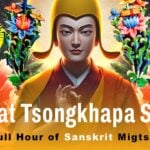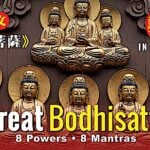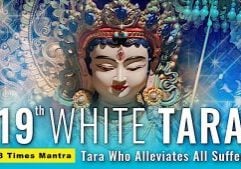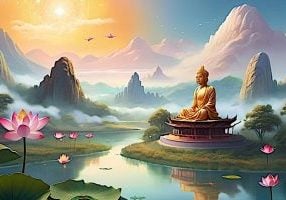Home
[smartslider3 slider=12]
Buddha Weekly's Latest Videos
[youtube-feed]
Buddha Weekly's Latest Features
Meditation and the Children’s Brains: What Science Says
Video Mantra: Mantra: 2nd White Tara of 21 Tara of Supreme Peace Sarasvati in Sanskrit 108 times
White Taras are all pacifying Taras. We visualize white light emanating from Tara as we chant the mantra, and entering our heart and going out to all beings in Samsara, healing them, pacifying their anger, poisons and diseases and all the causes of suffering. Video: https://www.youtube.com/watch?v=41nxdfZ9lwk The second Tara of the...
Supporting Member Video: Mantra: 2nd White Tara of 21 Tara of Supreme Peace Sarasvati in Sanskrit 108 times
White Taras are all pacifying Taras. We visualize white light emanating from Tara as we chant the mantra, and entering our heart and going out to all beings in Samsara, healing them, pacifying their anger, poisons and diseases and all the causes of suffering. The second Tara of the 21 is one...
Video: Mantra: 21st Tara Who Completely Perfects All Enlightened Activities: Marici Tara
The Twenty-First Tara of the twenty-one Taras, known as Tara Who Completely Perfects All Enlightened Activities is none other than Marici (pronounced Marichi). She perfects all pacifying activities and completes all siddhis, common and supreme, including various magical attainments, into the cause for final Enlightenment. This powerful pacifying mantra was transmitted by...
Video: Pacifying Mantra of White Tara Who Alleviates Suffering 108 Times, Sitatapatra, 19th Tara
The powerful pacifying mantra transmitted by Tara Herself to Lord Atisha as the 19th of the 21 Taras, White Tara Who Alleviates Suffering who is Sitatapatra: om tare tuttare ture mocana svaha (pronounced mochana with a soft ch ) Video: https://www.youtube.com/watch?v=sd0-6IK7luI What does She pacify? The 19th Tara, who...
Supporting Member Video: Mantra: 21st Tara Who Completely Perfects All Enlightened Activities: Marici Tara
The Twenty-First Tara of the twenty-one Taras, known as Tara Who Completely Perfects All Enlightened Activities is none other than Marici (pronounced Marichi). She perfects all pacifying activities and completes all siddhis, common and supreme, including various magical attainments, into the cause for final Enlightenment. This powerful pacifying mantra was transmitted by...
Supporting Members Video: Avalokiteshvara Guanyin Pusa Universal Gate Sutra 妙法蓮華經觀世音菩薩普門品 Recited for Benefit of all Beings
On Special days, such as Guanyin Pusa Avalokiteshvara's birthday (19th of 2nd lunar month), merit from recitation of Guanshiyin's sutra, Universal Gate Sutra is multiplied millions of times, extinguishing negative karma. This beautiful recitation is less than 12 minutes. On sacred days, ideally, chant three times and before bed, and on any...
Guru Rinpoche answers Lady Tsogyal: Should we practice one or many yidams? Is the master or the Yidam more important? Why is it important to practice the yidam deity?
Guru Rinpoche's teachings to the Lady Tsogyal are as clear and wonderful today as they were centuries ago. Reading the recorded words of the Lotus Born Padmasambhava is almost like sitting at the feet of the great Guru Buddha. Om Ah Hum Vajra Guru Padma Siddhi Hum Guru Rinpoche and Yeshe Tsogyal...
Supporting Member Video: Pacifying Mantra of White Tara Who Alleviates Suffering 108 Times, Sitatapatra, 19th Tara
The powerful pacifying mantra transmitted by Tara Herself to Lord Atisha as the 19th of the 21 Taras, White Tara Who Alleviates Suffering who is Sitatapatra: om tare tuttare ture mocana svaha (pronounced mochana with a soft ch ) Video: https://vimeo.com/927326889?share=copy What does She pacify? The 19th Tara, who...
Buddha Weekly’s Special Section
Tara, Mother of all Buddhas
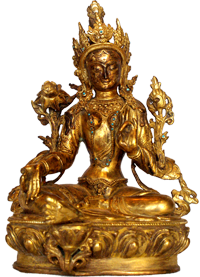
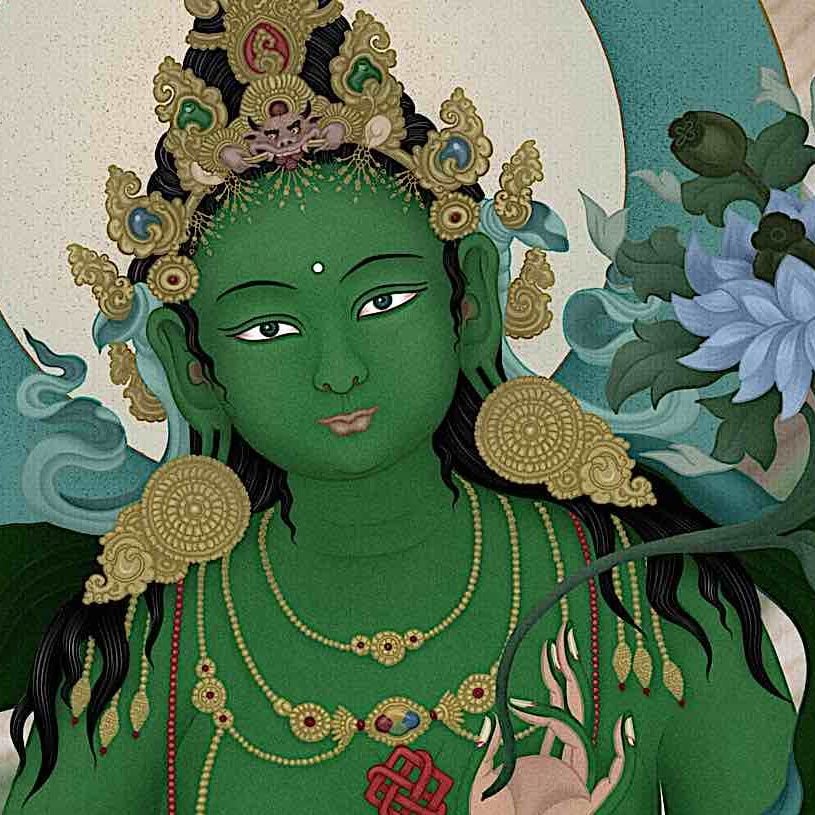
Karma Mother
How does Tara Help?
Tara, like any Mother, is ready to jump to our aid, even in mundane areas of life. She is the “practical Buddha” — the “Karma Mother” — the Buddha most active in our lives. Her Sanskrit name translates as “a star by which to navigate” — and like a star, she is always with us whenever we look for her.
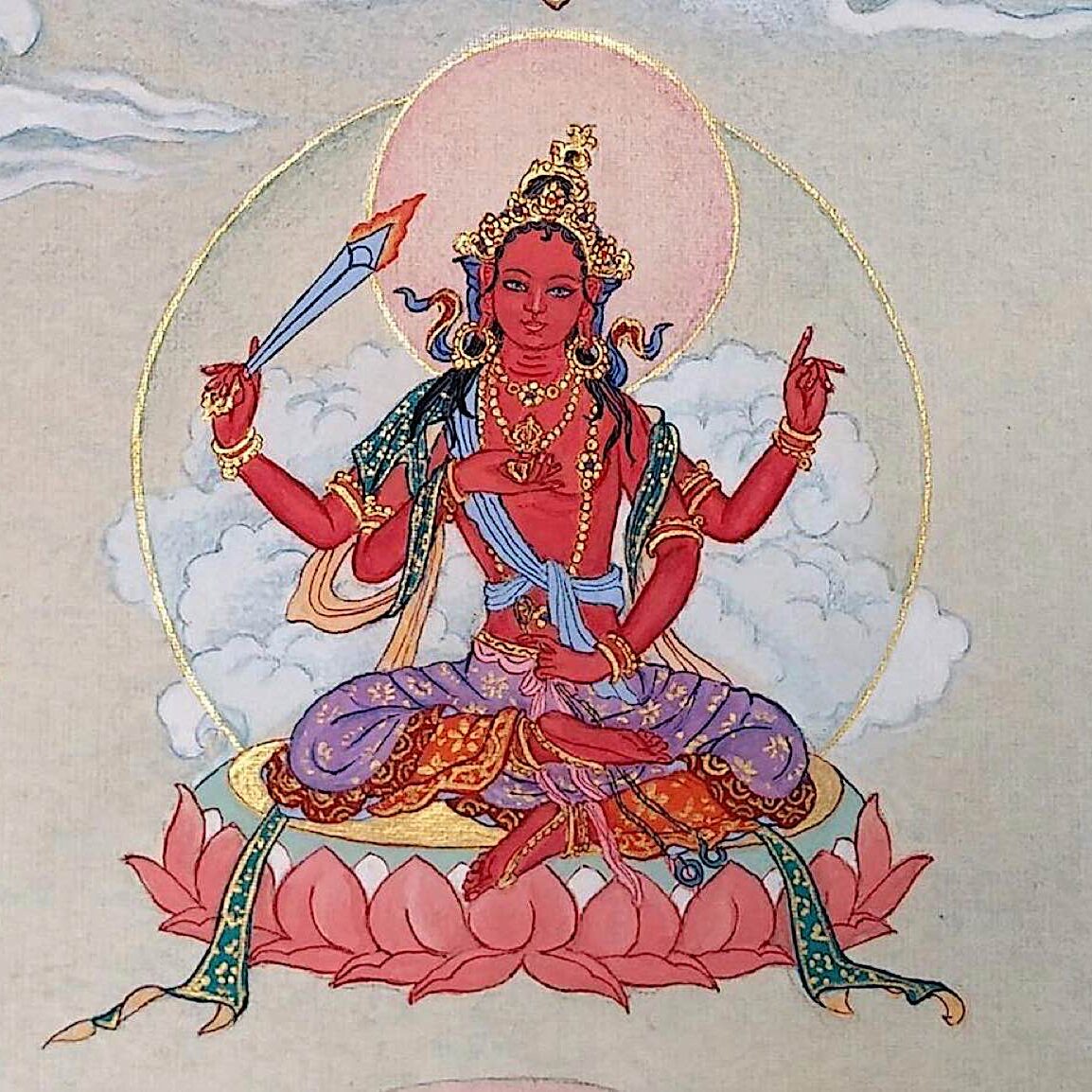
Tara on YouTube
21 Taras Mantra Video Playlist
An entire playlist of every one of the mantras for the 21 Taras. Don't miss the amazing Tara mantra chanting of Yoko Dharma for the each Tara of the 21 Taras according to Surya Gupta lineage. One video with many repetitions and visualized images for each Tara. The final video is the English-translated 21 Praises to Tara sung in English.



